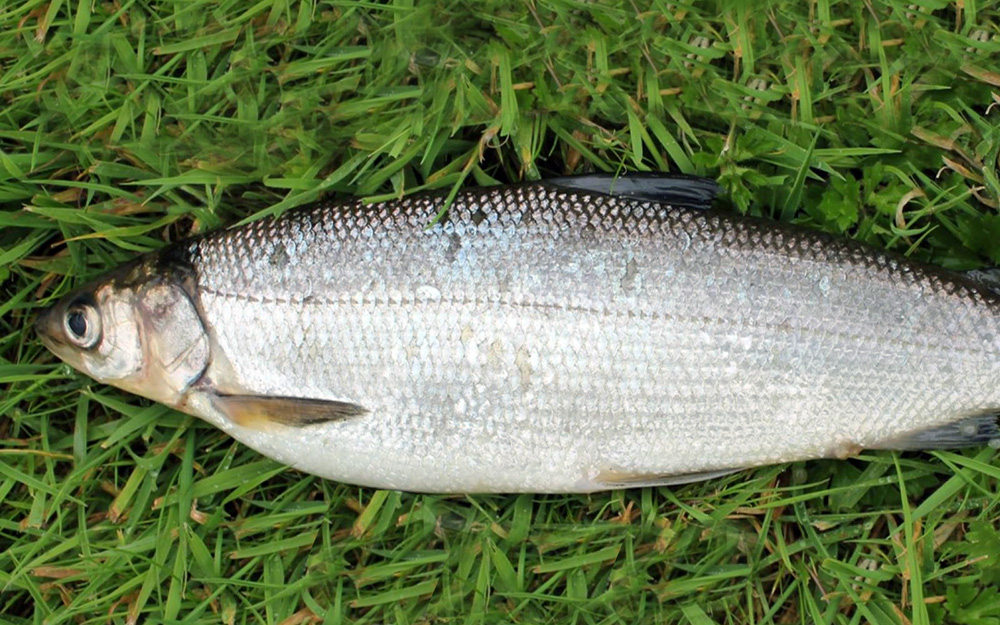Irish pollan
(Coregonus pollan)

Classification
The pollan or Irish pollan is a freshwater whitefish known only from five Irish lakes, Lough Neagh, Lower Lough Erne, Lough Ree, Lough Derg and Lough Allen. The pollan faces competition from introduced species such as pike, roach and zebra mussel, and the populations rely on restocking for survival.
The pollan populations are threatened by ecosystem changes such as eutrophication and increases in species, including pike, roach and zebra mussel. Only the population of Lough Neagh in Northern Ireland remains abundant and supports a small commercial fishery. The other Northern Irish population in Lough Erne has severely declined. The Lough Allen population was only confirmed for the first time in 2006. Other populations rely on stocking for their survival.
The Irish pollan and other members of the Coregonus genus are very like herrings in appearance but the presence of an adipose fin distinguishes them. The mouth is relatively small and the teeth are deciduous and very small. The scales are of moderate size, the dorsal fin is of moderate length and the tail fin deeply forked. The different species are difficult to tell apart unless the lake from which they originated is known.
This species grows to an average length of 9 to 10 in (22.9 to 25.4 cm) and a weight of 6 ounces (170 g).
The Irish pollan is a shoaling species. The diet consists small crustaceans and insect larvae.
Breeding takes place in November and December, with spawning taking place over hard ground in deep water.











